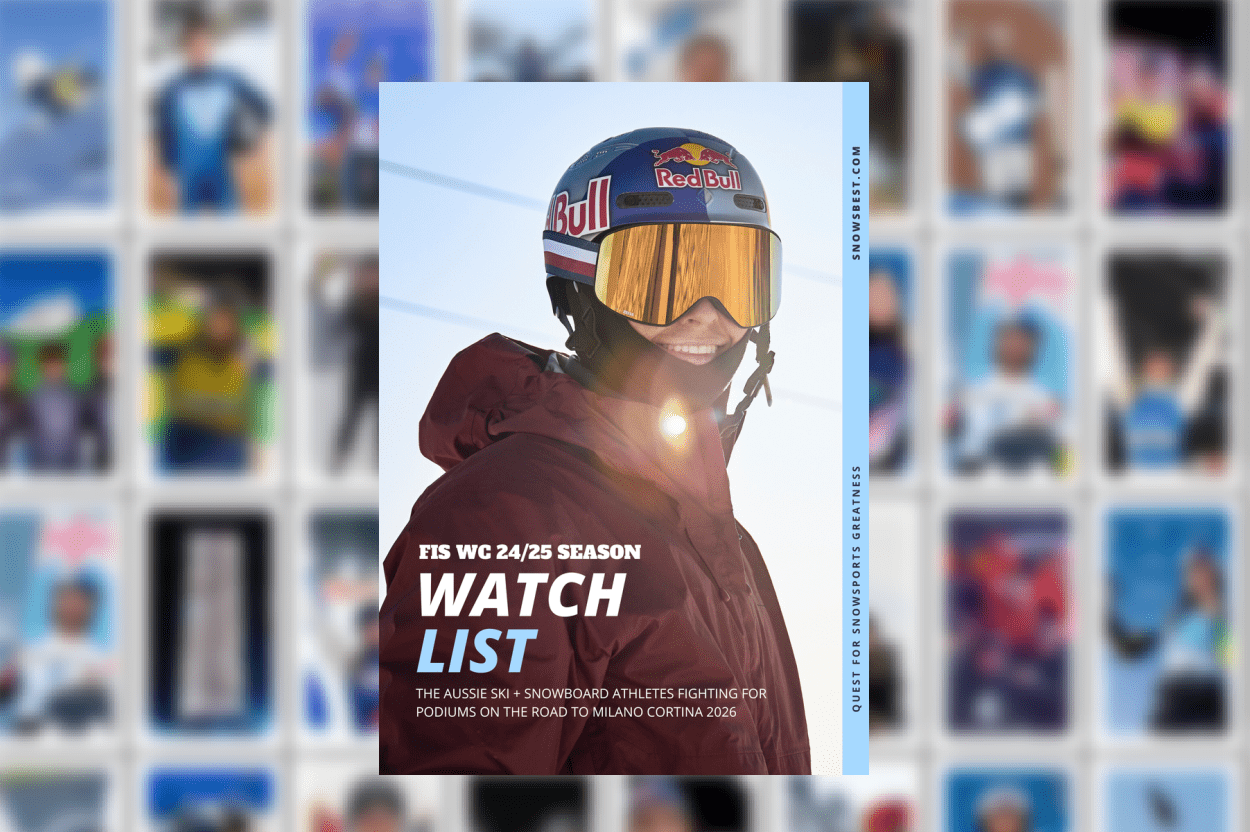No one likes rain on their parade. That’s particularly true when the parade you envisioned was a string of your favourite snowsbesties, all happily schlepping up powder-laden peaks on touring skis or splitboards and skins.
Untracked slopes, bluebird skies, good company, and the joy of type-2 fun under the snow gums. That was how I envisioned my recent backcountry trip in the NSW Snowy Mountains. I had a goal in mind to hike three of Australia’s peaks in a single day on a 12-hour mission known as the Three Peaks High Route. It was going to be epic.
I planned it months in advance – booking a cute little Airbnb in nearby Crackenback for mid-winter, locking in a Saturday as my planned touring day. I squirmed with excitement at every early-season snow report that registered a big dump in June and early July. In my mind, I had hatched a genius plan to avoid weekend crowds in the resort and tick off a bucket-list trip.
Except that wasn’t exactly how it turned out.
“Hardpacked” was how the resorts were describing conditions before I drove down. “Trying to carve on an ice rink” was probably more accurate. Nothing fresh had fallen in weeks. Best of all, the wind forecast for my Saturday had no kilometres per hour reading on it – just “gale force”.
“This is why it’s really good to have a window of time when you can make your trip,” Doug Chatten, owner of Snowy Mountains Backcountry in Perisher, told me when I rang him in the days prior.
It was Chatten who suggested the Three Peaks. He has more than 33 years’ experience backcountry guiding on some of the biggest mountains around the world. But he warned we would need to keep our options open in the lead-up.
“You need to be really flexible,” he said. “When people don’t have a weather window, they’re compelled to do exactly that trip. Maybe they’ve been planning that trip since last winter. But if the weather is super bad, you have to be ready to say, ‘Well maybe we won’t do that.’”
Many people think of avalanches as the number one safety concern outside resort boundaries. But Chatten explained that, in Australia, other risks are too often overlooked.
“I’m not saying avalanches don’t happen in here, they can and they’re dangerous, but they’re less common. What’s more common are wind and ice and variable snow conditions. Ask yourself – do you have crampons and a map and an extra insulation layer? Do you have everything you need to survive in the backcountry for 24 hours if you have to wait for search and rescue?”
Looking out my own weather window – the windscreen of my car – as I drove down on the Friday, it became clear that the Three Peaks would be out of the question. Wind was now being punctuated by rain showers, dashing my dreams of fluffy powder turns.
Instead, Chatten and I formulated an alternative. We would practice safety skills and navigation, work on essential techniques like A-frame and kick turns, and do a shorter hike in nearby terrain.
One welcome upside was we’d get a bit of a sleep-in. Rather than setting out under the dawn skies, waiting until later in the morning would allow the top layer of ice to soften. We started with a leisurely 10am cappuccino at Base Camp café, opposite Doug’s shop and run by his wife Nikki.
We diligently dressed in down, thermals and synthetic layers. No cotton (the golden rule), which soaks up water and will freeze in the rain we expected. We filled our packs with snacks, two litres of water, an extra down layer and a Bothy bag (an emergency heat shelter bag). Of course, we also carried an avalanche probe, shovel and beacon, tested before heading out.
Perhaps most importantly, we prepared to have fun. A tall ask considering the increasing wind and gloomy skies.

We picked a route through the snow gums and launched our shortened mission: a familiar hike to the trig station above Guthega. It was technical and more tiring than I remembered; skinning on icy snow required concentration, careful edging, and a few more switchbacks than I’m used to. I slipped backwards a lot and a couple of times the wind embarrassingly blew me over. The whiteout made everything look like TV static. Taking skins off and packing them away into our backpacks without anything flying away was a modern miracle on ice.

Finally, we earned our downhill run. I tentatively turned my ski edge into the white out. Crrrsshhhhh. Sounds like a snowboard sideslipping on a mogul field. But I had to trust Doug’s knowledge of the aspect and pitch of this slope. He had promised soft turns, and I had come to collect.
This ice-crusted exploration soon gave way to a feeling I couldn’t recognise. I was now skiing creamy snow that zinged out sideways under my feet. Bliss! The joy felt like ages but lasted probably only 30 seconds.

When we stopped to re-skin at Guthega Creek, the skies dictated we take one more climb uphill and a direct route home. We swished through more whipped cream atop an icy layer on our way back to Base Camp. It was far from the accomplishment of the Three Peaks.
But also; far from ending in disaster or a helicopter search and rescue mission. In the context of a tricky season and on a weekend where the elements were against us, it may as well have been Everest.

































